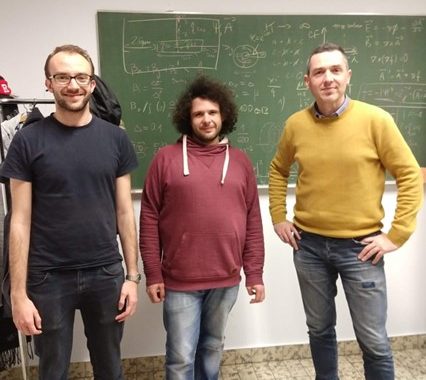
STSM of Julian Linek at the University of Antwerp (Belgium) in the group of Prof. M. Milosevic
Miniaturizing SQUIDs down to the nanoscale makes them suited for the investigation of magnetic properties of nano-sized magnetic particles (MNPs). Using SQUIDs as magnetic flux to voltage converters, one can use them to measure the magnetization of a MNP. In this configuration the figure of merit is the spin sensitivity given by the ratio of rms flux noise and the coupling factor . The coupling factor gives the flux coupled to the SQUID per magnetic moment of a MNP. In the group in Tübingen, the standard approach to determine the coupling factor is based on simulations with the simulation tool 3D-MLSI, which solves London equations on 2D current sheets. The group in Antwerp is able to simulate 3D structures using the Ginzburg-Landau (GL) theory, which allows a much more detailed description of more complex superconducting structures.
During the STSM, comparative simulations were carried out, followed by detailed discussions of the results, led to a good understanding of the capabilities and limitations of both simulation tools. On this basis simulations of coupling factors have been performed, which are intended to be published in a manuscript on the coupling of MNPs to SQUIDs in the far- and near field regime.
Further, simulations of three-axis vector nanoSQUIDs where elaborated, to analyze the crosstalk between close lying SQUIDs in presence of a magnetic field, which exceeds the capabilities of 3D-MLSI. The next generation layout of three-axis vector nanoSQUIDs will benefit from those GL-simulations.
